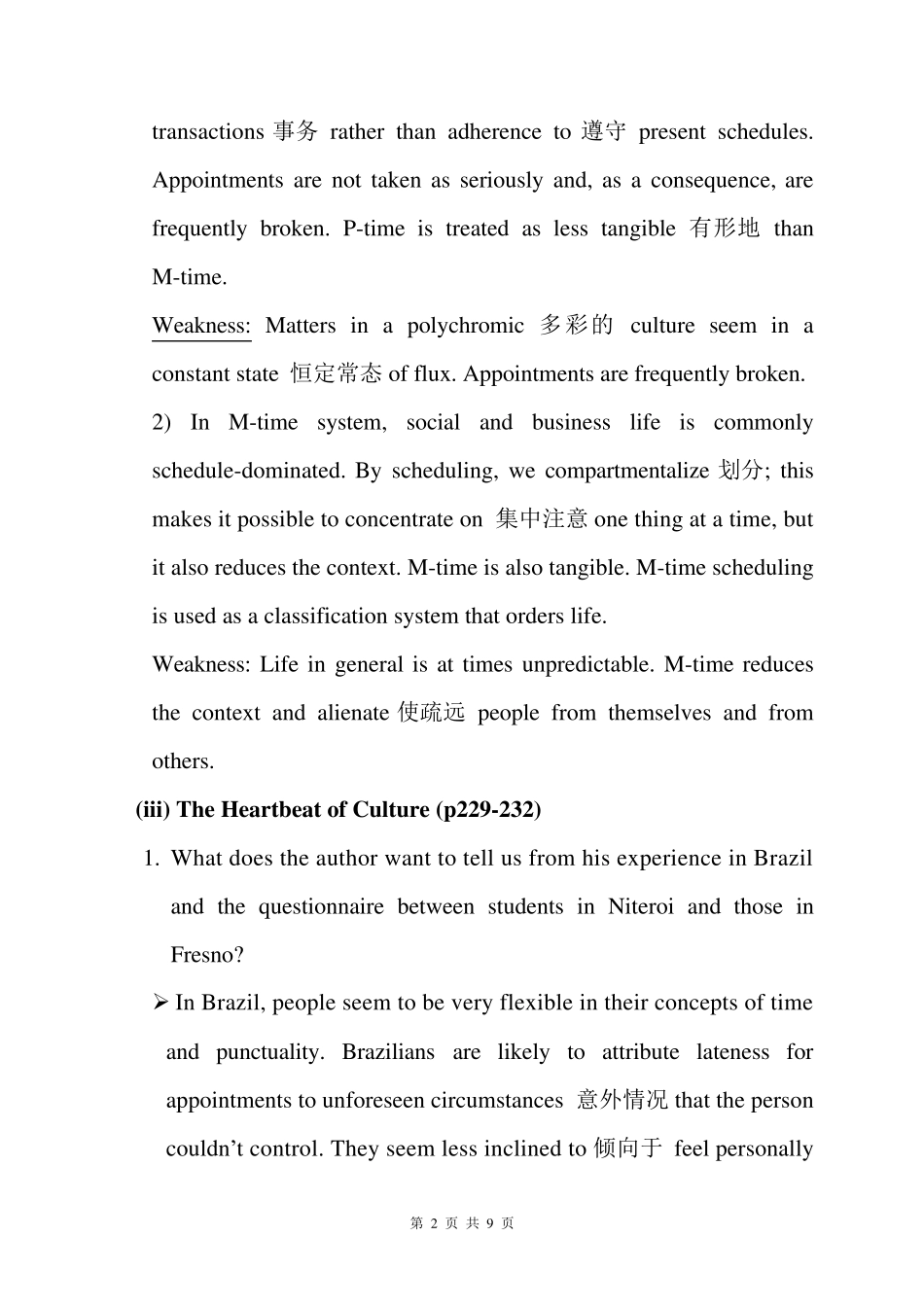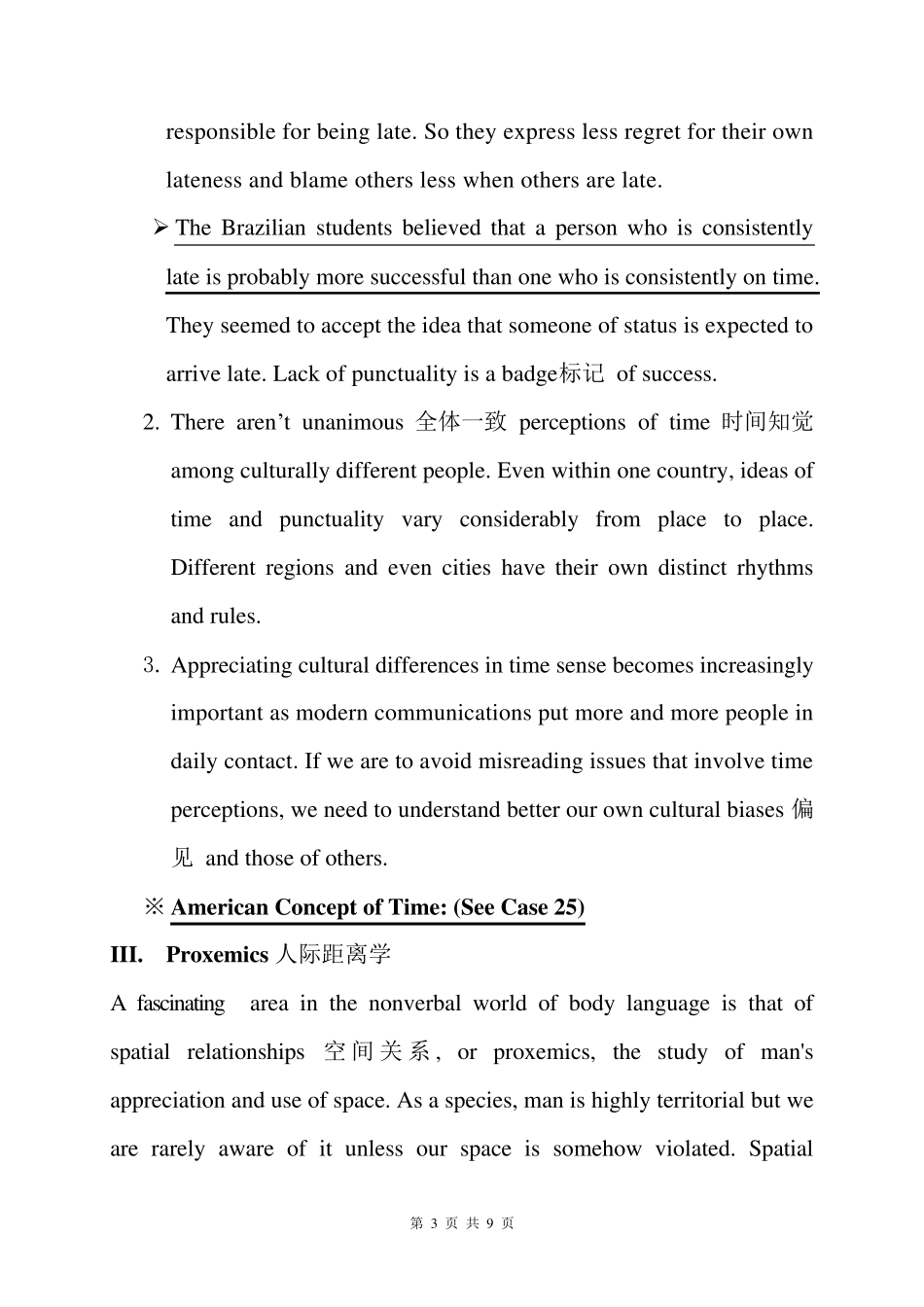第 1 页 共 9 页 Unit Seven Time and Space Across Cultures I. Warm Up 1. Please read the story on page 156. What can we learn from the story? 2. Go to answer the questions on Group Work (p235-236) and find out your sense of time? Supplement: Additional materials II. Chronemics Chronemics is the study of how people perceive and use time. (i) The sense of time: 1) Time is linear 线形. Western cultures think time is linear — a flow from the past to the present to the future. 2) Time is cyclical 周期的. Life on earth evolved in response to the cycles of day and night and the ebb and flow 潮涨潮落 of the tides. (ii) Monochronic 出现一次 and Polychronic Time (p256-257) 1. What is M-Time and P-Time? Which do you think is the dominating time system in our culture? 1) Monochronic time means paying attention to and doing only one thing at a time – events scheduled as separate items. 2) Polychronic time means being involved with many things at once. 2. What is the philosophy哲学 underlying each of the time system? 1) P-time stresses involvement of people and completion 完成 of 第 2 页 共 9 页 transactions 事务 rather than adherence to 遵守 present schedules. Appointments are not taken as seriously and, as a consequence, are frequently broken. P-time is treated as less tangible 有形地 than M-time. Weakness: Matters in a polychromic 多彩的 culture seem in a constant state 恒定常态of flux. Appointments are frequently broken. 2) In M-time system, social and business life is commonly schedule-dominated. By scheduling, we compartmentalize 划分; this makes it possible to concentrate on 集中注意 one thing at a time, but it also reduces the context. M-time is also tangible. M-time scheduling ...


